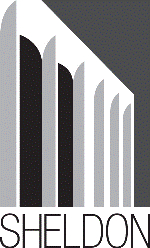Fine and Performing Arts, Hixson-Lied College of

Sheldon Museum of Art: Catalogs and Publications
Date of this Version
1991
Citation
Sheldon Memorial Art Gallery, University of Nebraska- Lincoln, September 1990-June 1991.
Abstract
It is significant that the earliest recorded historical documentation of landscape, as such, occurred in the same quarter century as the Europeans' discovery of the New World. In 1494 the German painter and printmaker, Albrecht Durer, produced watercolor landscapes, probably on site, in single sittings. Even though Renaissance characteristics such as new techniques in the handling of light, atmospheric perspective and space are present in his work, Durer's watercolor sketches of pure landscapes did not influence the art of his time. It was another German, Albrecht Altdorfer, who "is credited with the first pure landscapes--both in painting and in prints. Altdorfer etched a series of nine landscapes between 1517 and 1520 ... "Altdorfer's singular point of perspective both in his paintings and this series of etchings places the horizon uncharacteristically low. It was during this time, and by these members of the Danube School in southwestern Germany, that landscape painting was first treated as an independent genre. However, not until the early years of the 19th century did America claim the landscape tradition.
Webster defmes landscape painting as a "picture representing a section of natural, inland scenery, as of prairie, woodland, mountains, etc." Taken quite literally, then, it is no surprise that until the 1800s most landscapes were merely scenes that served as background for subjects of an historical nature. For example, historian Kenneth Clark states that " ... the mountains of Gothic landscape remain unreal (because) medieval man did not explore them." Clark also informs us that the "landscape of fact," or the landscape of 17th century Holland "directly influenced, or even created nineteenth -century vision ... "The straightforward, naturalistic approach by the 17th century Dutch artists who concentrated on the peace and quiet of the Dutch countryside, such as Jacob van Ruisdael and his student, Meindert Hobbema, provided the influence that eventually dominated 19th-century landscape painting.3 The Dutch artists also are credited with having created the first easel paintings that allowed for small renderings of the landscape to be shown in private homes. In the mid-17th century, Nicolas Poussin, often considered the most important French painter of his century, followed the traditions of recording ancient, classical concepts. Painters influenced by Poussin favored a classic linearity as opposed to the subtleties of color. However, Poussin's contemporary, French landscape painter Claude Lorraine, favored the ideal, or pastoral tradition that emphasizes light and atmospheric qualities. Known as 'Claudian,' this approach influenced the picturesque beauty of the painters of the 17th through the 19th centuries, especially the English painters Joseph William Mallord Turner and Richard Wilson.


Comments
All images are copyright by the original artists. Publication copyright 1991 The Regents of the University of Nebraska